Railroad directions
for this line are north to the Airport
terminal and south to the mainline at
CP 1102. The branch officially starts
at MP J0.00 on the south leg of the
wye at CP 1102. The branch can also
accessed from the north leg of the wye
at CP 1107.
J0.00 Mainline - The
first two miles of the branch are on a
new grade, built when the West
International Airport Road was rebuilt
and upgraded to expressway standards.
The road is where the branch used to
be and the railroad is now on the
north side of the right-of-way.
J0.20 North Leg of
Wye - The highway that bridges over
the wye area is Minnesota Drive, the
main roadway from the airport area to
downtown anchorage.
J0.68 Northwood
Street - After curving around and
heading west, thus following the new
West International Airport Road toward
the airport, the railroad crosses
Northwood Street.
J1.23 Jewel Lake
Road - To the north, this road is also
called Spenard Road. Jewel Lake,
located several miles to the south and
covering 26 acres, was named on 1912.
The Alaska Department of Fish and Game
has in the past stocked Jewel Lake
with silver salmon and rainbow trout.
There is also a swimming area and
public park.
J1.43 West
International Airport Road - The rail
line crosses to the south side of the
highway.
J1.60 Airport
Runaround - This 800-foot long siding
can be used for locomotives to run
around their passenger trains as they
drop off and pick up cruise ship tour
groups. It is located in an industrial
area, full of warehouses and rental
car garages.
J2.05 Aircraft Drive
- The railroad crosses this airport
road on an overpass, as the railroad
grade rises to the grade of the
airport complex.
J2.25 West
International Airport Road - Airport
Road reaches the airport, loops
through the terminal area, and then
circles back. We cross it on a new
trestle.
J2.33 Terminal Track
- The Anchorage International Airport
Branch splits into two station tracks.
The Alaska Railroad employee timetable
cautions that there is close clearance
between here and the end of track due
to the terminal platform.
J2.43 TSIA Depot -
TSIA is the Ted Stevens International
Airport. Technically, this is the Bill
Sheffield Alaska Railroad Depot at the
Anchorage International Airport. This
is the end of the branch, recently
extended to this new train station
which was built for the cruise ship
trains. With the first passengers
arriving on May 25, 2003, the project
included an elevated track leading to
a 300' covered passenger platform with
a 3-story2-level passenger terminal.
The building provides assembly space
for 250 people and has pedestrian flow
into a subterranean tunnel that leads
to the main airport facility. A 1999
marketing study projected the depot,
built with $28 million in federal
money, could serve as many as 200,000
rail passengers annually within a year
of opening. However, with no commuter
rail service and declining cruise ship
traffic, the airport rail station
served just 20,000 rail passengers in
2009. To expand its use, the Alaska
Railroad has recently began renting
the facility for special event, such
as conventions and business meetings.
The station is
named for former governor Bill
Sheffield, who signed legislation
establishing the quasi-public Alaska
Railroad Corporation and its
seven-member board of directors as a
part of the process of Alaska
acquiring the railroad from the
federal government. Later, Sheffield
was appointed to the Board and elected
chairman.
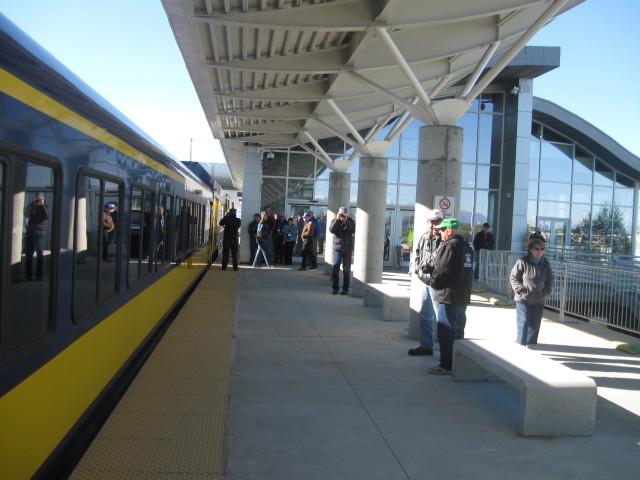
Three story 2-level passenger
terminal.
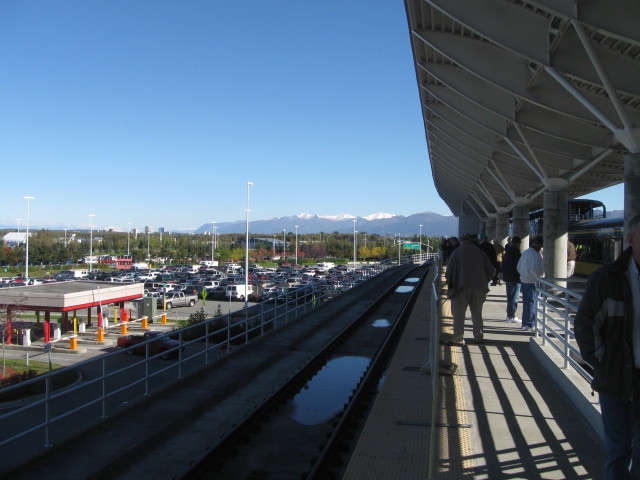
GPS: 61 10.513, -149
58.784
Click
to see map. Click Back
button on your browser to return to
this page.
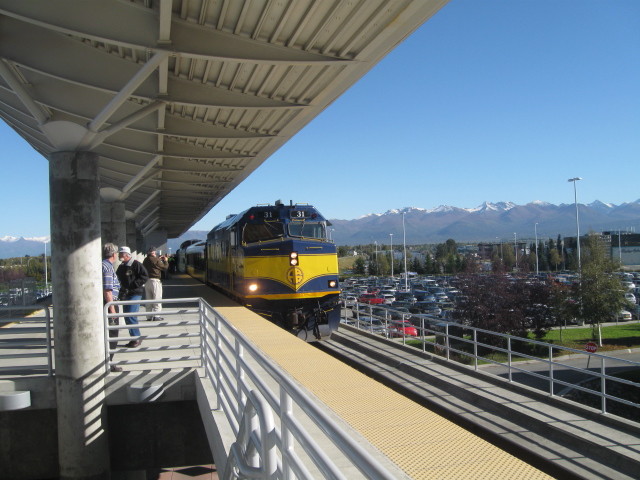
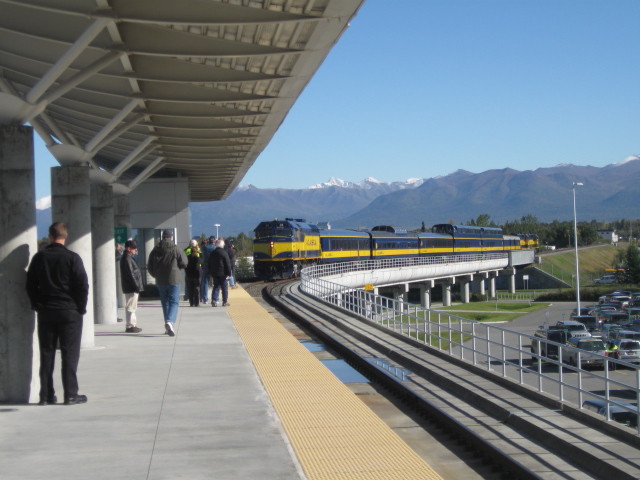
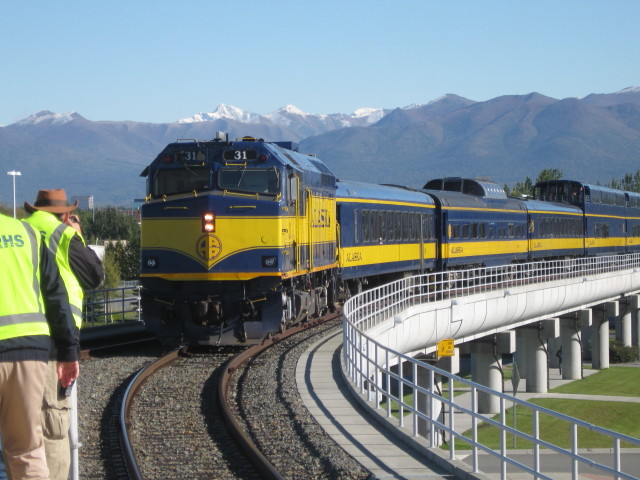
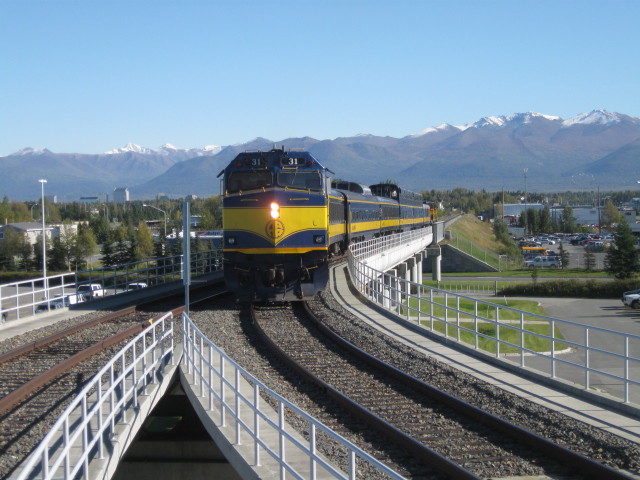
We disembarked on the station
platform and organized for the
photo runbys. After a
half-hour it was time to re-board
and leave the airport.
It was a short ride to the main at
which we headed south to meet up
with Turnagain Arm.
Potter
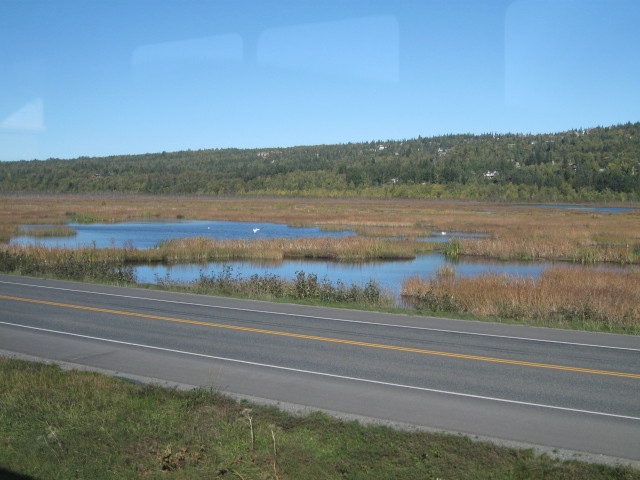
Potter
Marsh, part of the Anchorage
Coastal Wildlife Refuge.
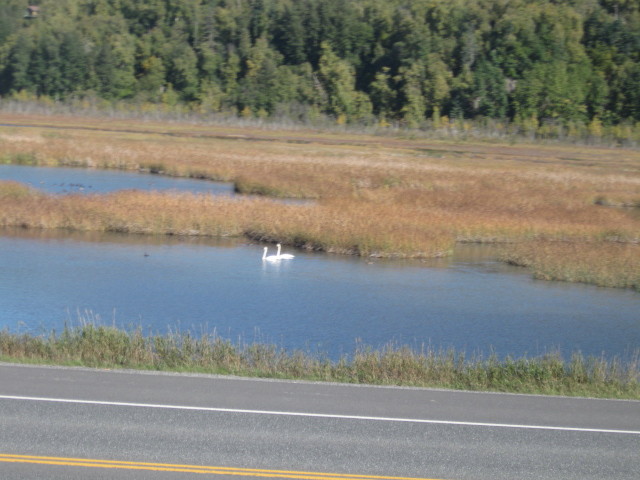
A favorite location to spot many
species of birds.
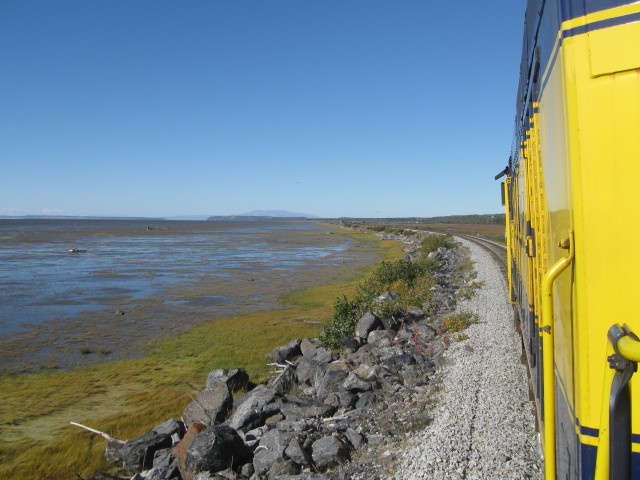
Turnagain Arm.
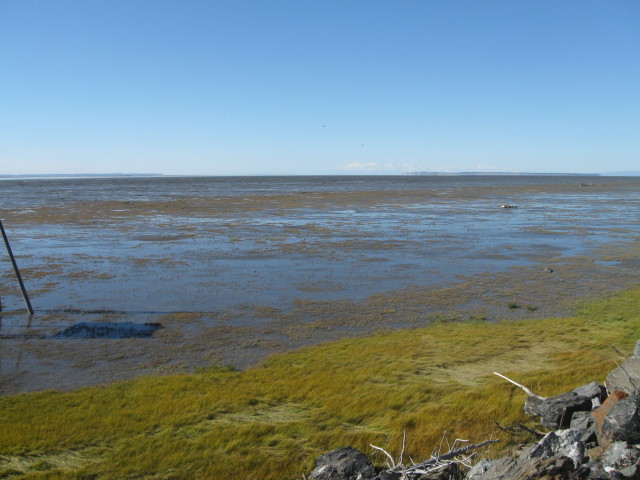
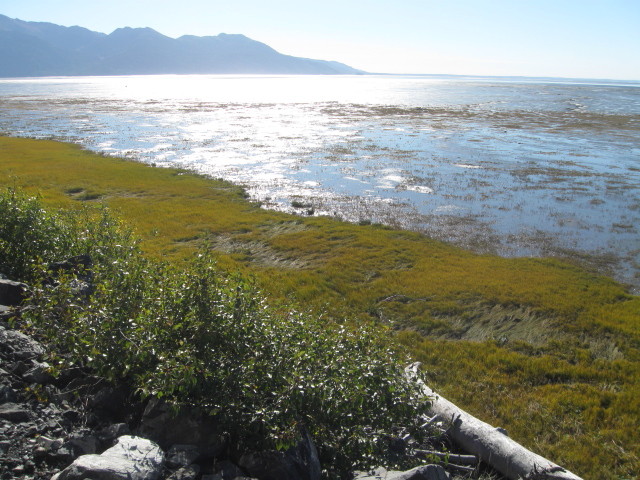
MP
100.6 Potter
- The historic Potter section
house (named for nearby Potter
Creek) and Potter Marsh
Wildlife Viewing Area mark the
junction of Cool Inlet and
Turnagain Arm, so named when
Captain Cool's search (1778)
up the arm for the Northwest
Passage ended when he had to
"turn again." Here you can
watch for the bore tide, a
huge wall of water rushing
into or out of the arm during
tide changes. Turnagain Arm is
one of only about 60 bodies of
water worldwide to exhibit a
tidal bore. The bore may be
more than six feet high and
travel at 15 miles per hour on
high spring tides. Turnagain
Arm sees the largest tidal
range in the United States,
with mean of 30 feet, and the
fourth highest in the world.
Located at
Potter is the Potter Section
House State Historic Site,
consisting of a former Alaska
Railroad section house (built
in 1929), rotary snowplow
X-900212, and troop
sleeper/kitchen car. During
the summer, volunteers often
maintain a railroad garden
here in the tradition of
railroad workers.
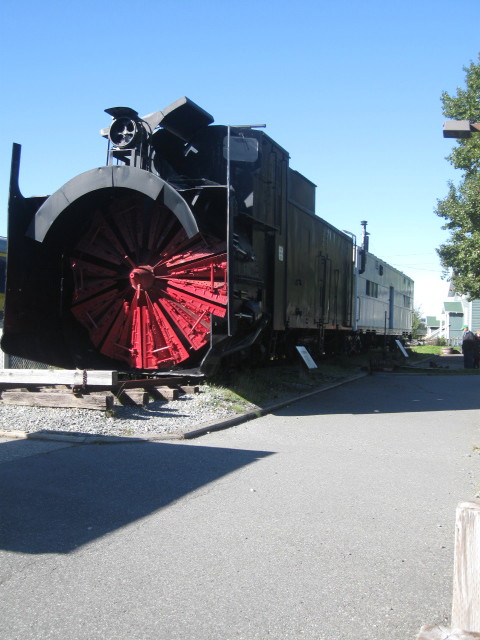
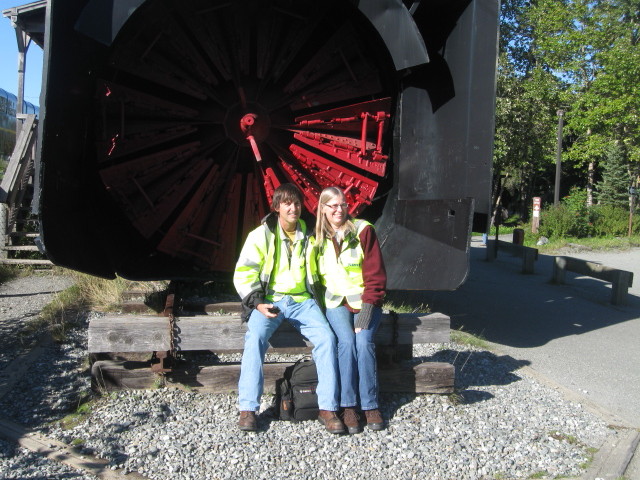
Bart Jennings and wife,
Sarah "Lunch Princess."
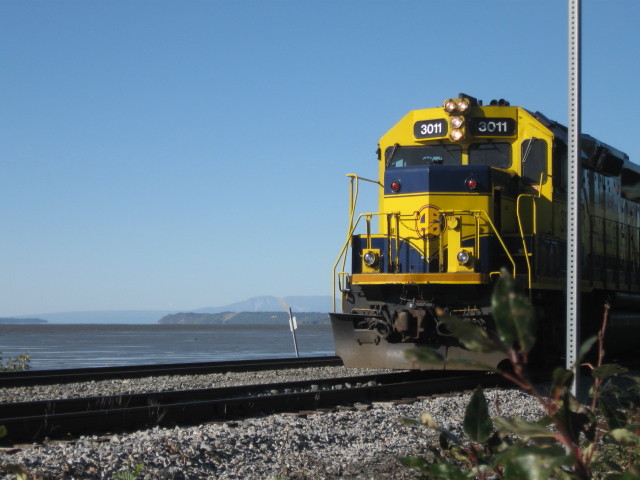
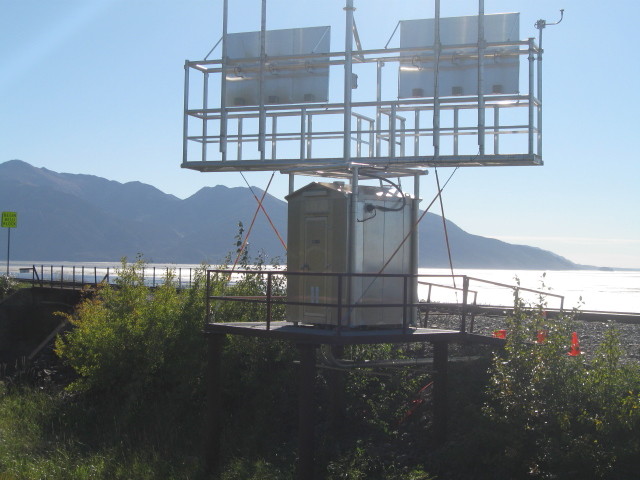
Solar powered signal boxes.
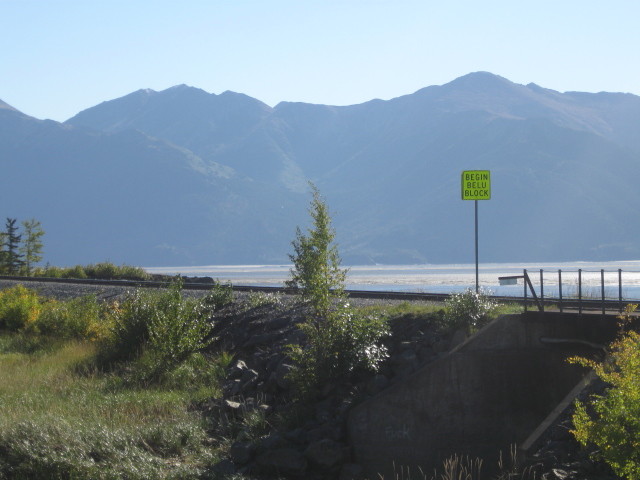
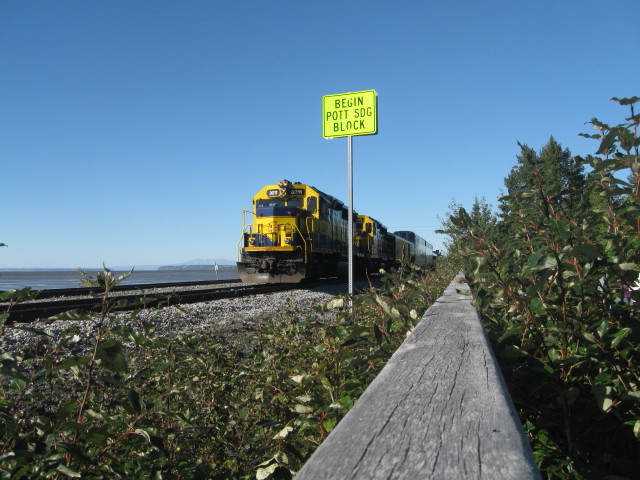
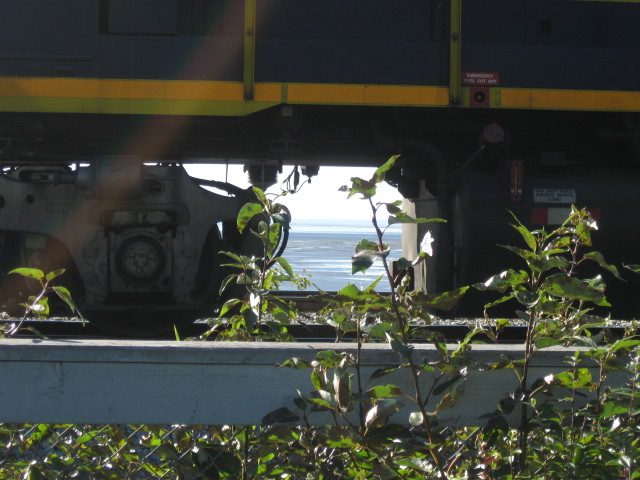
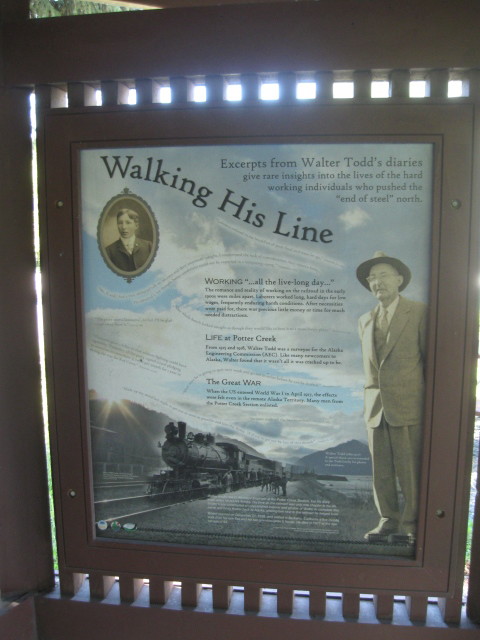
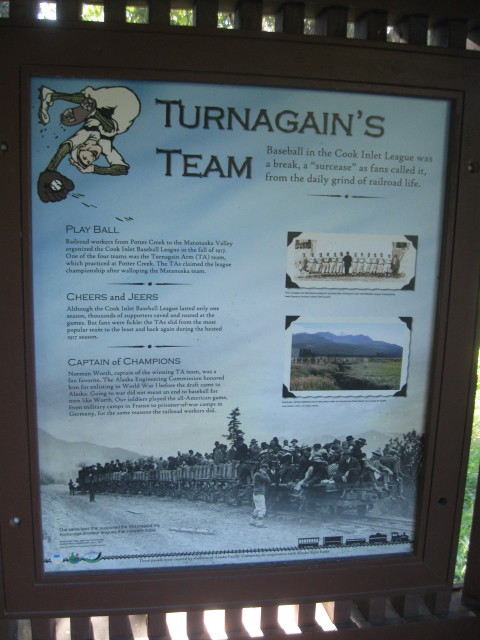
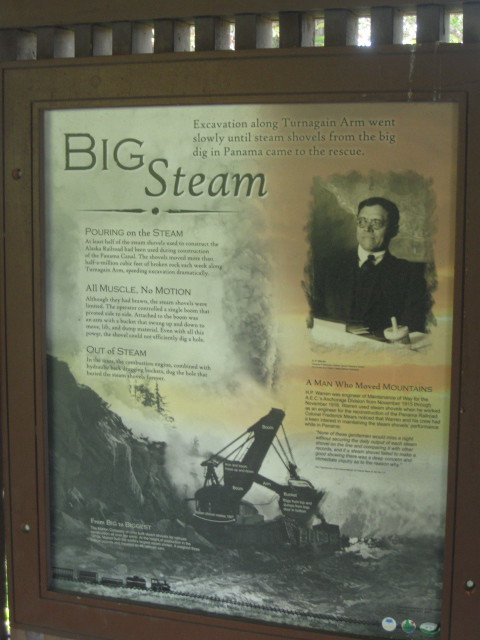
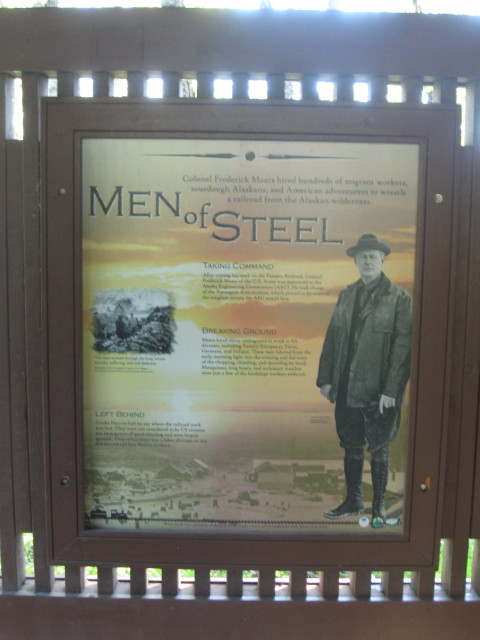
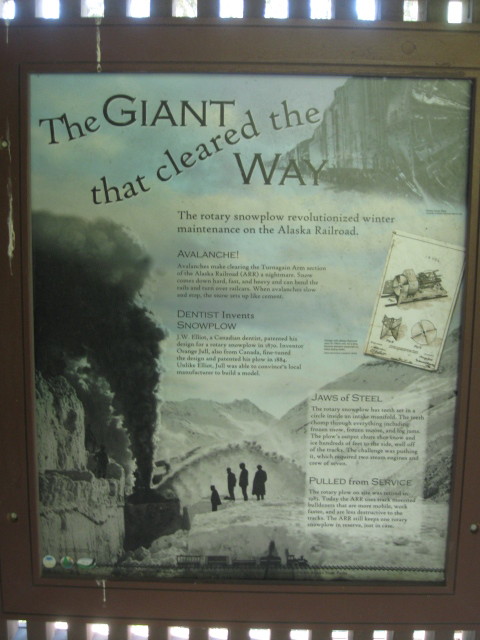
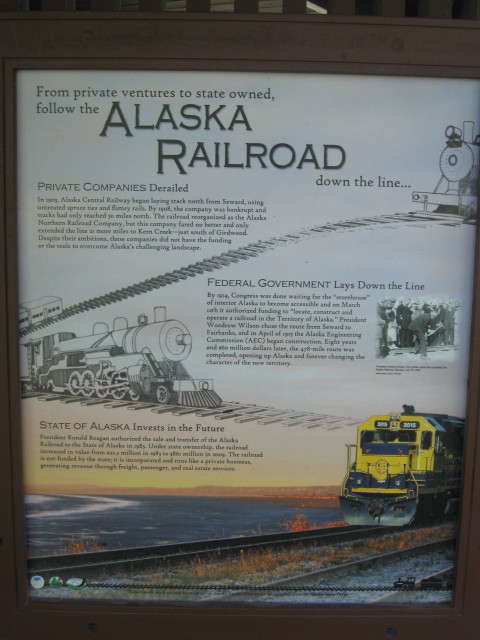
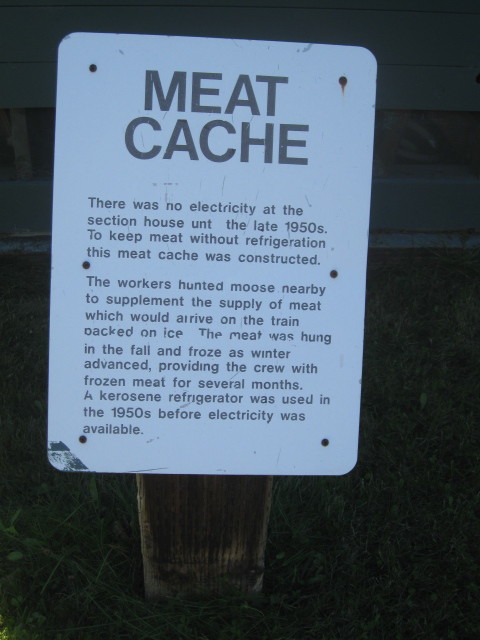
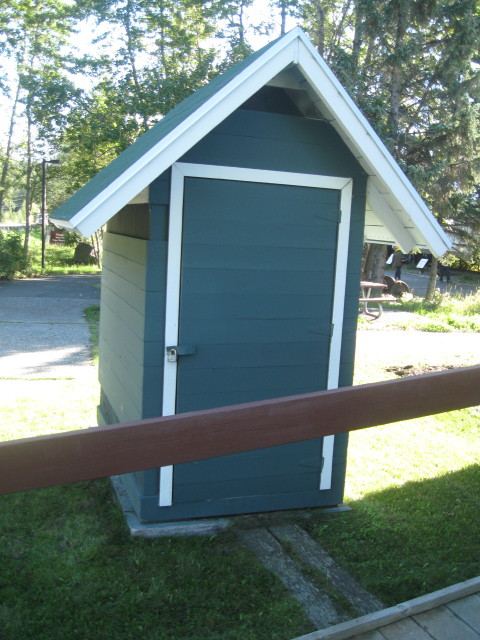
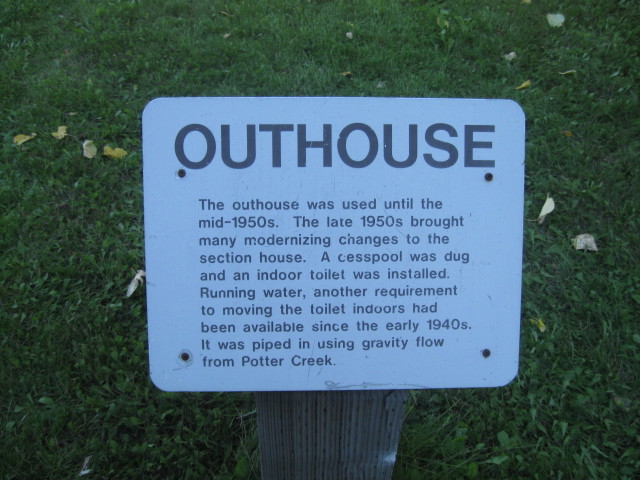
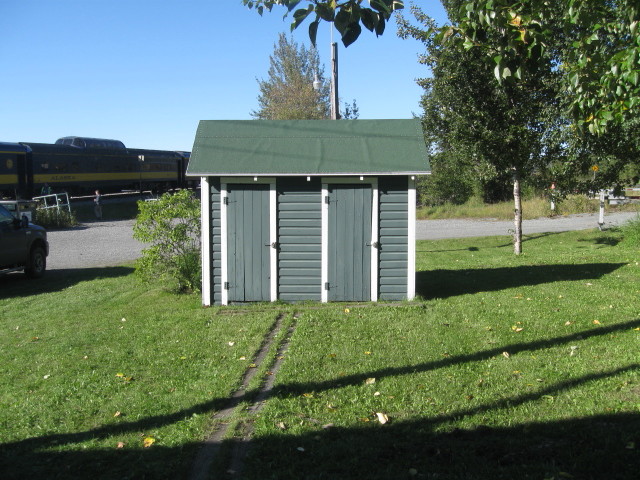
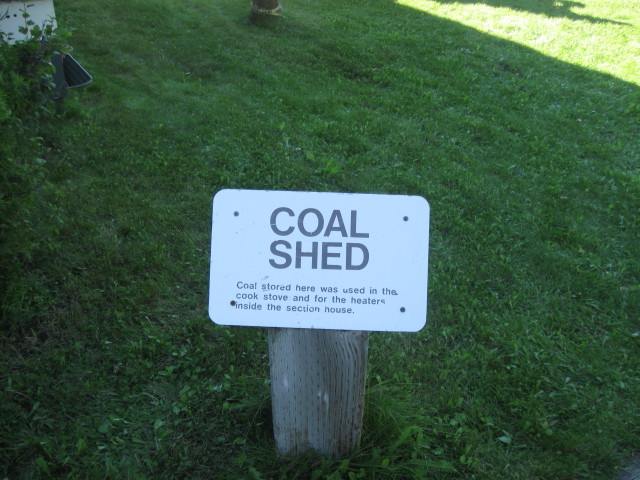
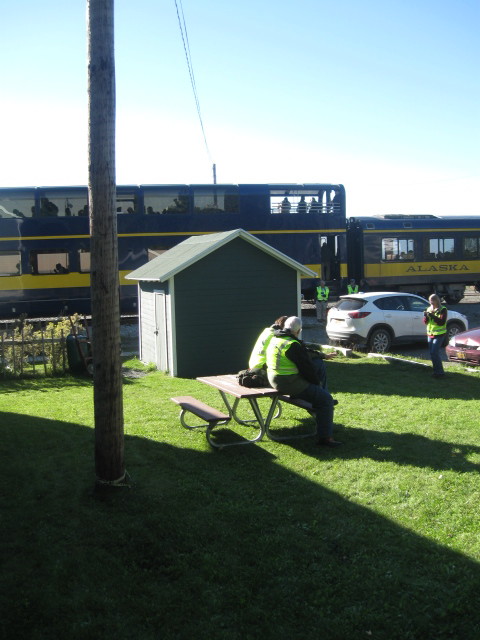
Coal shed
The train horn blew so it
was time to re-board and
begin our return trip to
Anchorage. Tonight is
Banquet night so now back
to motel and get ready for
the evening.
Banquet
The
2013 NRHS Banquet was
being held at the
Anchorage Hilton, the
convention
headquarters hotel.
And just a short walk
down hill to the train
station.
The lobby in front of
the banquet rooms was
filled with
conventioneers being
social and enjoying a
cocktail before
dinner. Then the doors
opened and we all went
to find our assigned
table.
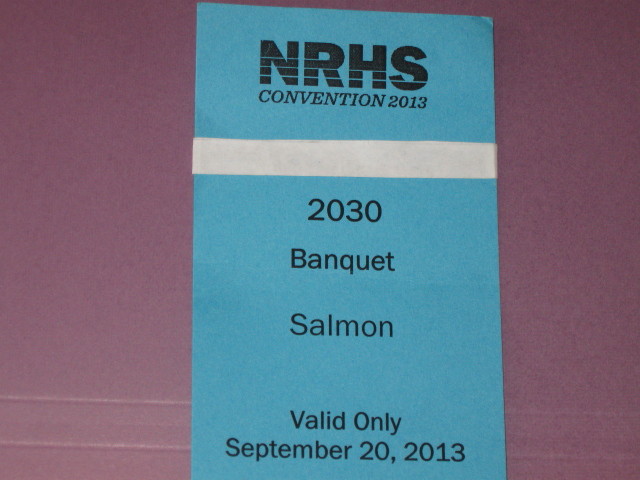
My
choice was salmon. I
mean; You are in
Alaska, why would you
not eat salmon in
Alaska. And I am sure
the hotel kitchen has
some experience in
cooking and
procuring this
fish. Other entree choices
were Prime Rib, Chicken or
Vegetarian.
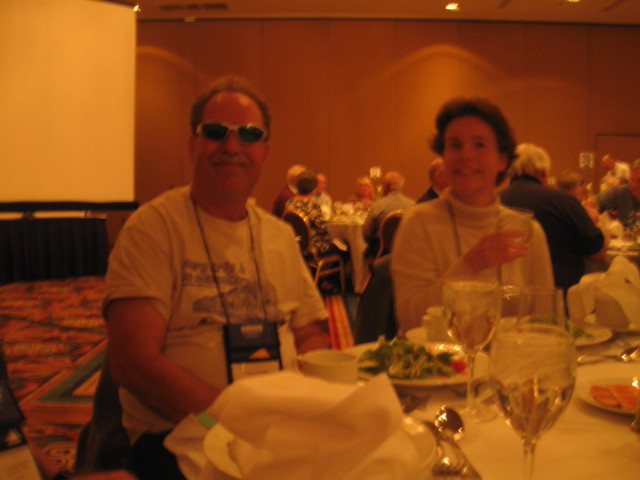
My table mates Chris G.
and Elizabeth A.
The
presentation began
after dinner. The
first set were NRHS
officials. We were
told that when it was
suggested to have a
convention in Alaska a
few years back, all
the doomsayers said it
is too far, nobody
would come, not enough
interest and many
other wild
predictions.
Well look around you
here and see that
almost five hundred
souls came to the Last
Frontier to ride
trains and see this
great land of ours.
This convention will
turn out to be a very
successful one.
Our
next NRHS speaker told
us about the NRHS
RailCamp programs.
RailCamp
programs, sponsored by
the NRHS, which give
hands-on railroading
and preservation
experience to high
school kids on the
east and west coasts.
The
NRHS is teaming with
rail industry partners
to offer an exciting
week of train
operations, facility
tours, workshops,
train rides and more.
both camps allow
students to interact
directly with rail
employees and learn
what it take to be a
railroader.
RailCamp East will be
held July 6-11, 2014,
and will be based in
Newark, Del., with
some activities in
Strasburg, PA.
RailCamp Northwest
will take place July
27-Aug. 2, 2014, and
again will be held in
Tacoma, Wash.
Then the basket was
passed around for help
with scholarship
funding. Thanks to
everyone's help enough
monies were collected
to fund two
scholarships.
The
Thank You time
arrived. A big thank
yous went out to all
the volunteers and
help need to put on
this successful
convention.
A
special thank you and a
big round of applause went
to Barton (Bart) Jennings
and his partner and wife,
Sarah. Bart has spent the
past several years working
with the Alaska Railroad
on this project. There
needed to be a lot
organization and
coordination to make these
big dances work. And work
they did, daily like clock
works.
Bart
and Sara published the
NRHS 2013 Convention
Guidebook. From which I
have used many fact and
figures in writing my
adventures in Alaska. So a
big Thank You from me.
Next we heard from the railroad. We
were a new and different class of
conventioneers and tourists for them.
A few railroad old timers said that
some of the conventioneers knew as
much or more about their railroad than
they did. One official said he had
never heard of a photo run-by till he
meet Bart. Now, they might offer
something like this to their
customers. But, they all enjoyed our
visit and would like us to come back
and be welcome warmly.
This was followed by a history of the
railroad from the federal government,
built under the management of the
Alaska Engineering Commission to
January 1985 when the State of Alaska
bought the railroad from the U S
government for $22.3 million. Today it
is a successful state business.
For tonight's
finale, we watched photos and heard
stories on running a railroad in the
wilderness and in weather as low as 60
below. When your loco breaks down you
can't ship it to Seattle or Omaha to
get it repaired. You have to do it in
house by yourself. Are you motivated
to leave your warm shelter to go out
in 60 below weather to get a train
moving when all the wheels are frozen
to the rail. Lots of good stories and
then it was over.
Leaving the hotel
Chris P. and I share a taxi back to
our motel. His ankle has been
bothering him and didn't want to walk
back. The ride was short and I was in
my room in short order.
Tomorrow is the last train ride day.
Hard to believe that it has been a
week since I first landed in Alaska.
The places and things I been to and
seen are beyond imagination and
conception.
Soon it was lights out.
NRHS RailCamp
Click
for info on RailCamp Click
Back button on your browser to return
to this page.